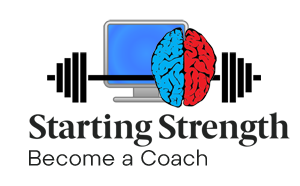Update on my current quad tendon rehab: the current rehab I mentioned using eccentric squats doesn't seem to be progressing. Might be because I'm using front squats instead of back squats and the stress is too much at those joint angles. Next session I'm gonna start testing Rip's approach (low bar box squats).
Yngvi, I've experimented a bit with isometrics, but not thoroughly. The one thing that gives me pause about isometrics is that you only load the tissue at one specific joint angle, and I wonder if this narrows the set of injured fibers that are targeted by the therapeutic loading.
I suppose you could do a series of isometrics at different joint angles, and it's an interesting question whether this is in some way equivalent to the effect of eccentric loading (e.g. if you did isometric contractions at 1000 different joint angles between, say, 45 and 90 degrees of joint angle, would this be similar to the effect of eccentrically contracting between 45 and 90 degrees?)
Here are a couple good papers on eccentric rehab that I keep meaning to read but haven't yet (both open access)
Frontiers | Quantification of Internal Stress-Strain Fields in Human Tendon: Unraveling the Mechanisms that Underlie Regional Tendon Adaptations and Mal-Adaptations to Mechanical Loading and the Effectiveness of Therapeutic Eccentric Exercise | Physiology
role of eccentric exercise in sport injuries rehabilitation | British Medical Bulletin | Oxford Academic
Worked up to 195 lb for eccentric squats for front, and then back squats, using this technique (when weight was low enough I'd do a curl or hang clean to re-rack it, and when it got heavier switched to the bent over row).
I also wonder whether incorporating front squats into the program can reduce the risk of quadricep muscle and tendon injuries.
Here's the reasoning:
When low bar squats start to get challenging, there's a substantial increase in the risk of knees sliding forward, and often suddenly sliding forwards.
This can be precipitated by a loss of tension in the hamstrings: if the net force of the hamstrings at the ischial tuberosity is not parallel to the femur (and if the force is pointing towards the knee joint), then tension in the hamstrings produces a torque on the femur around the knee such that the femur rotates up around the knee, essentially aiding the quads in knee extension.
In turn, a this torque of the femur around the knee produces a torque of the shank around the ankle (helping the knees stay back and not sliding forward). This can be understood through conservation of angular momentum around the ankle joint.
So the hamstrings support the quads by contributing to knee extension, thus reducing the load on the quads. And they also prevent the shanks from rotating forward, which prevents a potentially catastrophic increase in quad tension due to the sudden increase in the amount of stretching these tissues undergo when the knee suddenly flexes.
In particular, if you have not trained front squats, where the knees are trained in a fuller range of motion (and have adapted to high tension at more extreme angles of knee flexion), and tissue is suddenly put under a much higher tension than it has ever experienced, it's not hard to imagine that injury risk is increased.









